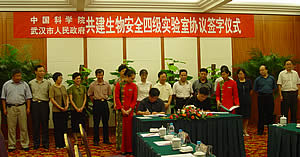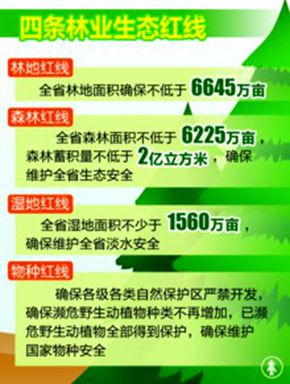
基于生态安全的水网丘陵地区最优旅游道路选线——以湖南水府庙流域为例
编号
lyqk008683


中文标题
基于生态安全的水网丘陵地区最优旅游道路选线——以湖南水府庙流域为例


作者单位
中南大学建筑与艺术学院 长沙 410075


期刊名称
中国城市林业


年份
2020


卷号
18


期号
6


栏目名称
研究论文


中文摘要
从生态安全的视角研究水网丘陵地区最优旅游道路选线,旨在减少旅游道路开发建设对区域环境的负面影响。文章以水府庙流域为例,利用生态安全格局分析方法构建该流域的综合水安全、水源保护、地质安全、生物保护、乡土文化5个景观子格局,并将各子格局重新赋值后等权叠加形成生态阻力面,再利用MCR模型模拟筛选出该流域风景区之间的最优道路选线,最后提出道路选线的建设要求,为水网丘陵地区的风景区交通规划提供参考。


关键词
生态安全
风景区
水府庙流域
MCR模型
最优旅游道路选线


英文标题
Optimal Tourism Route Selection in Hilly Area of Water Network Based on Ecological Security: A Case Study of Shuifumiao Basin in Hunan Province


作者英文名
Xu Yanmei, Liu Jingtao, Dai Xiangjun


单位英文名
School of Architecture and Art, Central South University, Changsha 410075, China


英文摘要
This paper studies the optimal route line selection in hilly area of water network from the perspective of ecological security in order to reduce the negative impact of tourism road development and construction on regional environment. With Shuifumiao basin as a case study, the paper uses the ecological security pattern analysis method to build five landscape sub-patterns, i.e., integrated water safety, water conservation, geology security, biology protection and local culture. After each sub-patterns are re-assigned, the equal weights are superimposed to form ecological resistance surface. Then the MCR model is used to simulate and screen out the optimal route line selection in the river scenic area. On this basis, the construction requirements are put forward for the route selection, which will provide the paradigm references for traffic planning of the scenic spots in hilly region of water network.


英文关键词
ecological security;scenic area;shuifumiao basin;MCR model;optimal tourism route selection


起始页码
95


截止页码
99


投稿时间
2019/11/25


作者简介
许砚梅(1970-),女,副教授,研究方向为风景园林规划与设计。E-mail:289733986@qq.com


通讯作者介绍
戴湘君(1997-),女,硕士,研究方向为城市规划与设计。E-mail:1242736383@qq.com


E-mail
1242736383@qq.com


DOI
10.12169/zgcsly.2019.11.25.0002


参考文献
[1] 罗明义.论我国生态旅游区的建设和管理[J].云南师范大学学报(哲学社会科学版),2005(5):83-86.
[2] 黄雪飞,吴次芳,游和远,等.基于MCR模型的水网平原区乡村景观生态廊道构建[J].农业工程学报,2019,35(10):243-251.
[3] 赵明月,王文杰,王维,等.基于土地利用的水府庙水库流域生态安全评价[J].环境工程技术学报,2015,5(1):38-45.
[4] 俞孔坚,王春连,李迪华,等.水生态空间红线概念、划定方法及实证研究[J].生态学报,2019,39(16):5911-5921.
[5] 肖华斌,盛硕,刘嘉.基于景观生态安全格局评价的佛山市生态基础设施构建研究[J].中国园林,2017,33(11):118-122.
[6] 迟潇潇.1960-2009年中国极端降水时空特征及风险分析[D].上海:上海师范大学,2016.
[7] 李建.基于3S技术的流域水系提取和流域汇水评价[M].桂林:桂林电子科技大学,2018.
[8] HAGAR J C.Influence of riparian buffer width on bird assemblages in Western Oregon[J].Journal of Wildlife Management,1999,63(2):484-496.
[9] 肖华斌,张慧莹,刘莹,等.自然资源整合视角下泰山区域生态网络构建研究[J].上海城市规划,2020(1):42-47.
[10] 张鹏.基于景观安全格局的秦岭北麓太平峪片区景观规划策略研究[D].西安:西安建筑科技大学,2014.
[11] 周婷婷.反规划理念在京山县主要非建设用地空间规划中的应用研究[D].武汉:华中师范大学,2011.
[12] 冯潇,陈思淇.线性文化遗产的空间格局构建:以明长城大同段为例[J].风景园林,2019,26(11):31-37.
[13] 戴冰武,曾丽婷,韩西丽.基于生态安全格局的风景区游览线路最低成本路径选线:以湖南省平江县福桶山景区为例[J].现代城市研究,2015(1):97-103.
[14] 董长松.基于GIS最优路径法的采空区道路选线优化研究[D].西安:长安大学,2010.
[15] 张云路,关海莉,刘迪,等.基于生态格局与景观风貌视角的城市新区道路绿地体系构建:以邯郸为例[J].中国城市林业,2017,15(3):35-38.
[16] 林静,高爱仙,余美珠.福建三明市生态旅游资源开发对策[J].西北农林科技大学学报(社会科学版),2007(2):72-76.


PDF全文
浏览全文


-
相关记录
更多
- 基于MCR模型的苏南水网乡村生态安全格局构建 2022
- 生态安全视角下的山地区域及河岸带功能区划分 2022
- 基于生态安全格局的城市森林生态网络优化 2020
- 文明进程视野下森林食品安全与生态安全关系演变规律 2016
- 森林旅游景区生态安全影响因素的IRDS模型研究——基于扎根理论 2015
- 基于生态系统安全的唐山市绿地系统规划 2013
 打印
打印



